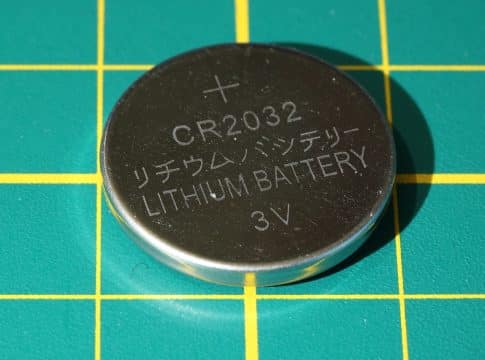The Pitfalls of Low-Quality Carbon Offsets: Are They a Threat to Our Planet?
Many companies have turned to cheap offsets or junk credits, resulting in a significant portion of their credits being classified as high-risk. So, what makes these offsets low-quality? These credits often come from forest conservation and renewable energy projects, which are prone to issues like over-crediting and exaggerated claims of emission reductions. Let’s deep dive into what’s happening in the era of carbon credits.
Downfall of Industry Standards Amid Rise of Low-Quality Carbon Offsets
Offsets primarily come from two project categories: avoidance and removals. Avoidance projects, such as those focused on forest conservation and renewable energy, make up over 97% of the credits retired by these companies. However, these projects often fail to deliver genuine emissions reductions.
Many offsets come from redundant projects that do not meet the industry standards. This reliance on outdated credits further undermines the credibility of companies’ net-zero claims.
Carbon removal projects, which capture and store CO2, account for only 2.3% of the offsets retired. Companies show little interest in shifting towards these potentially more effective solutions. Only a few firms, like Audi and Takeda, have significantly increased their use of removal credits.
Last year an intriguing article by The New Yorker, exposed some major issues. For example, the Kariba project in Zimbabwe, which claimed to prevent deforestation and earned nearly $100 million, has been criticized for not achieving its goals. A report by Bloomberg also revealed that South Pole, cut ties with the project, potentially leading to its collapse. This situation could undermine the climate claims of big corporations like Volkswagen and Nestlé.
Companies are reconsidering their trust on offsets. A survey from late 2022 found that 40% of corporate respondents were worried about the reputational risks associated with carbon offsets. As a result, firms such as Shell, Nestlé, EasyJet, and Fortescue Metals Group have started to distance themselves from offsets and their associated claims of carbon neutrality.
Study the graphs to understand the absolute volumes of all offsets retired by each company and relative shares of avoidance or removal offsets retired over 2020–2023source: Nature
READ MORE: How Effective Are Carbon Credits in Corporate Net Zero? SBTi Speaks
Are Junk Carbon Offsets Masking Climate Goals?
Interestingly, Bloomberg highlighted the Kyoto study which pointed out that many offsets come from outdated projects. Furthermore, many corporations are fueling the problem with low-quality carbon credits. These offsets, intended to neutralize emissions by investing in projects like forestry and renewable energy, are failing to deliver real climate benefits. Additionally, around 75% of the credits were linked to projects started before 2016, diminishing their credibility. Many companies opted for the cheapest offsets rather than investing in more effective carbon removal strategies.
The study also revealed that between 2020 and 2023, top companies like Shell, Delta Air Lines, and Chevron purchased mostly ineffective offsets. A staggering 87% of these credits were deemed high-risk, often failing to achieve genuine emissions reductions. This marks a significant blow to the carbon offset market, which is already shrinking due to increasing scrutiny and legal challenges.
False Claims and Exaggerated Results
Forestry projects, which claim to capture carbon by protecting or planting trees, often fall short. Trees can be prone to wildfires, which release stored carbon back into the atmosphere. For instance, Green Diamond’s Forest carbon projects were ravaged by wildfires, releasing millions of metric tons of stored carbon back into the atmosphere. This problem is not isolated, as similar setbacks occurred in other Pacific Northwest forests.
Despite noble intentions, these projects often fail to compensate for fossil fuel emissions, leading to disbelief in their climate benefits. Furthermore, the benefits of these projects are often overstated. Trees may not be at risk of logging in the first place, making it questionable whether offsets for avoided deforestation are truly effective.
Renewable energy credits face similar issues. With clean energy becoming more cost-effective, the carbon credits often fund projects that would have been built regardless of carbon offset purchases. This raises doubts about whether such credits contribute new value to the global carbon balance. The Integrity Council for the Voluntary Carbon Market (ICVM) found that a significant portion of renewable credits failed to meet reliability standards.
MUST READ: ICVCM Axes Renewable Energy Carbon Credits from CCP Label
Corporate Choices Signal Paradigm Shift and a Weak VCM
For real progress, companies need to focus on directly reducing their emissions rather than relying on dubious offsets. While carbon credits might play a role in a future net-zero world, the current market’s flaws hinder meaningful climate action. Without major reforms, the market might continue with its ineffective and even harmful practices.
Global carbon markets are facing growing scrutiny as more companies question the effectiveness of their offsets. Once hailed as a simple solution to balance out greenhouse gas emissions, offsets are now under fire for failing to deliver promised climate benefits. Subsequently, this also digs out a major problem. It shows how the voluntary carbon market (VCM) is weakened by the demand for low-quality offsets. As companies keep choosing cheap, ineffective options, the real impact of their climate efforts is doubtful. To make a real difference, they should shift to higher-quality carbon removal projects and stick to strict standards.
Carbon Direct’s recent report highlights a significant shift. The media firm conveyed good news that the demand for traditional, riskier credits is falling, while interest in high-quality carbon removal projects is rising. Between 2021 and 2023, purchases of quality-focused removal credits multiplied five times.
Embracing Premium Carbon Credits
Moving on, carbon removal strategies like managed reforestation and biochar sequestration can create high-value credits. However, these methods are still niche and face technical and economic hurdles. For now, most companies prioritize directly reducing their emissions, which is more reliable than depending on questionable offsets to mitigate emissions.
As companies continue to rely on cheap, ineffective options, the true impact of their climate strategies becomes doubtful. This graph further illustrates the contraction in the carbon credit market due to these loopholes.
To see real climate benefits, a shift toward higher-quality carbon removal projects and adherence to strict verified standards is crucial.
For instance, projects must prove that their emission reductions or carbon removals are real, measurable, permanent, additional, independently verified, and unique, as per standards like the Gold Standard and Verified Carbon Standard (VCS). Credits are issued only when these criteria are met. This approach ensures low-quality offsets are discarded, leading to more effective climate action.
FURTHER READING: ICVCM Reveals First CCP-Approved Carbon Credits Worth 27M Carbon Credits
The post The Pitfalls of Low-Quality Carbon Offsets: Are They a Threat to Our Planet? appeared first on Carbon Credits.



